This Christmas Break is brought to you by:
Today and tomorrow in Michigan, then back to Boston on Friday.
This Christmas Break is brought to you by:
Today and tomorrow in Michigan, then back to Boston on Friday.
There is absolutely no reason why I should have liked this book. First off, it’s about ultra-long distance runners – I can barely run two miles, have no interest in running for twenty-four hours up and down mountains, and the whole thing just reeks of excessive machismo. I’m not a fan of books heavy on the machismo. I’m not really a fan of books about sports or sporting events (except for this one Phillip Hoose novel you should definitely buy used for a penny right now and thank me later). I am not interested in reading about people who run too much and how to prevent their injuries. I’m not even particularly interested in hidden tribal cultures.
However, Christopher McDougall managed to somehow twist all of those things into this book that is so compelling, so interesting, so not-put-downable, that I was more than suckered in – I was drinking the Kool-Aid.
No, I do not think a 50 mile race is in my future, but McDougall’s book does make an excellent case for running as something so innately human, that you would be stupid not to do it and if you aren’t enjoying it, you are stupid.
Okay, that’s harsh and not entirely accurate. You aren’t stupid… but McDougal argues that running has so many health/mind/body/soul benefits that it shouldn’t just be a fun way to burn a few calories, it can be joyous. And if you don’t like running – if running hurts, if you have running injuries, etc – then you are probably doing it wrong.
Now, this probably sounds like some manifesto on running. No. This book is actually a little memoir of a period of time in McDougall’s life when he was suffering from mysterious running pains and injuries. Convinced – perhaps blindly and optimistically – that he didn’t have to say goodbye to running, McDougall followed his journalistic training and began to research. He visited doctors, trainers, elite marathoners and ultramarathoners, and historians, all in search of the root of this paradox: you, as a human, can run, but not too much or you’ll break the machine.
Research led McDougall to an unlikely place – the middle of the Mexican rainforest, where a mysterious transient runner had been seen barefooting it around the hills and forests. McDougall found the man, and found that he was living amongst the Tarahumara – an ancient tribe of people who regularly run ultramarathon-type distances, without the help of Western medicine, footwear, GPS watches, hydration belts, etc. These people just ran, and their bodies supported this endeavor.
Anyway, so the story, then, is McDougall trying to organize an ultramarathon in Tarahumara land, pitting these natives against some of America’s fastest ultramarathoners in a friendly competition, and to see what these two groups had in common. So much of the book is McDougall trying to wrangle a bunch of quirky, crazy runners (you’d have to be crazy to be an elite 100-mile-race-runner, eh?) into the middle of the Mexican rainforest. This plot is amusing enough, but McDougall also surrounds this story with his copious research, surprising challenges to modern American conceptions of health, the body, and the sport of running, and other “side quests” that led him to the Tarahumara.
As a new runner, I was glad to read this book now before I accidentally injure myself and then have to backtrack. I am not taking McDougall’s recommendations as law, but I definitely think differently about my body as I am running, which I think will help me develop better physical habits that can prevent injuries.
As a non-runner (which is me, like, every other month), I thought this was just freaking riveting. I wanted to pass it off to every person I know, insist that they read it immediately. Heck, I bought a copy at Barnes & Noble yesterday -of one of those 3 books for the price of 2 tables, thinking I could give it to someone as a Christmas gift, but I have no one who needs a gift. I just bought a BONUS Christmas gift, for no reason… and whoever I decide to give it to should consider themselves lucky!
In case you missed any of my Best of 2011 Reading Extravaganza, check out this page. Thanks for playing again this year, guys! I will see you after Christmas!
One reason I enjoy making these book lists is because I like to look at overall trends in my reading habits: how my tastes change, what things I like, what things I don’t like. Narcissism. Yes. Moving on. Last year, food books, young adult-ish classics, and non-fiction were the big winners. This year, I’ve noticed some more abstract trends.
I’m liking books about America:
Caitlin Shetterly’s Made for You and Me has all of these things. This is a memoir of the first few years of Shetterly’s marriage, beginning with the newlyweds realizing a lifelong dream and moving from Maine to California with the hopes of making a living as creative people. However, the universe quickly seems to conspire against the two. The moving nightmares pile up. There’s an unplanned pregnancy, and Shetterly is rendered so sick she can’t work as much as she’d hoped. But the big Crusher of Dreams here is The Recession. Shetterly and her husband assume that when they arrive in California, there will be some menial day-jobs to be had while they stabilize their creative careers, but The Recession arrives swiftly; reading about how a sick Shetterly and her desperate husband – both educated, skilled, and enthusiastic – was fairly devastating.
Right now, I live a fairly sheltered, risk-averse existence. But even for me, moving across the country to achieve a dream is something I would consider possible. Something I have done myself. I hope and wish that all people in America feel the same way… but Shetterly’s book reminded me that the economy is acting in ways that go beyond my own “magical thinking.” It’s too easy for many of us sheltered, risk-averse folks to see the recession as an inconvenience rather than a brick wall. Maybe it will take me longer to get a job, limit my job choices, make my retirement/future less certain… but I’ll get by. This memoir rocked me because I felt like Shetterly and her husband could be me – two young people who want to start a life together somewhere new, who want to work in a creative, exciting environment, who want nothing more than to be able to work to support their families, who are educated and smart and diligent. And there are still things beyond your control.
Shetterly’s text takes the reader from her marriage, to California, to the birth of her son, and back to her mother’s home in Maine. By the time the story ends, I was fully invested and wanted to know what happened next to this new family. Even though Shetterly’s life is average, her story mundane, this book, I think is just as emotionally gripping as any other more sensational memoir and achieves that paradoxical task of being both deeply personal and completely universal. It’s her story, it’s your story, etc etc. Love love loved it.
I feel like it’s unfair for me to praise this book, to insist you read it, because clearly this book was written expressly for me. Or at least expressly to the narrow window of readers that I most resemble, or something. Anyway, of COURSE I loved this book because I couldn’t NOT love this book. This novel could be a 250-page subliminal message that suggests I go on a quick killing spree or light my neighbor’s house on fire or vote Republican. Wouldn’t matter. I would still love it.
See? Not fair.
Here are the things I love: in general and about Where Things Come Back:
1. Realism I just read a semester’s worth of science fiction and fantasy. Yes, I am feeling more warmly toward this genre of the fantastic than ever before… but no. I do not love you, sci-fi fantasy, like I love realism. I feel like this makes me weird, but I am okay with that. To make matters worse, this was my first post-SFF read. Insert water+desert metaphor here. Where Things Come Back is exactly what I want from a work of young adult realism: rich cast of characters I want to know more about and their multifaceted relationships. Meaningful settings. A protagonist who hasn’t figured it all out yet, who makes questionable decisions, who speaks to you, the reader, with an understated urgency, pulling you into his world and his story.
2. Multiple Narrators Again, I think this makes me weird. I’ve heard a lot of people kvetch about novels with multiple POVs. Personally, I like them. Where Things Come Back has two: first- person protagonist/narrator, Cullen Witter, and a third-person storyline about a young missionary in Africa. And not only are these two unlikely stories intricately intertwined, they both become equally interesting and compelling reads, which is multiple POVs done right.
3. Ivory-Billed Woodpeckers Ever since I read The Race to Save the Lord God Bird for a class on Phillip Hoose’s literary oeuvre, I have found these semi-extinct birds completely fascinating. And maybe because they are so innately mysterious themselves, I feel like whenever a Lord God Bird pops up in any form of media, I pay attention. In this novel, the Ivory-Billed Woodpecker is all over the place – the town where Cullen lives is the site of a potential sighting – but then again, the bird is actually nowhere to be found. Cullen doesn’t have as much reverence or curiosity about these birds as I do, but because this book has woodpeckers, it’s a book I like.
Yes, yes. I am weird. I get it.
4. Sufjan Stevens John Corey Whaley reports that the idea for this book came from Sufjan Stevens’s song, The Lord God Bird. I love Sufjan Stevens. Anyone who listens to/draws inspiration from his music is okay by me. But most impressively, Whaley is able to capture something of the same aesthetic as a Sufjan Stevens song. Major points.
5. The Cult of the Author I am susceptible to hype, impressed by literary awards and recognitions, and a fan of cute boys.
See: Blog buzz, National Book Foundation 5 Under 35, William C. Morris Award noms. I’ll let you Google Image the last one at your own discretion.
Whaley gives off some John Green vibes, yo. Give him a few years and he’ll have a legion of fan-people. You heard it here first. This book is THAT good. If you build it, they will come, etc.

Listen, guys.
If I tell you to read this one again, will you listen to me?
It will be well-worth your time, I promise.
The surface stuff:
Baby Wilbur is so cute my ovaries almost exploded.
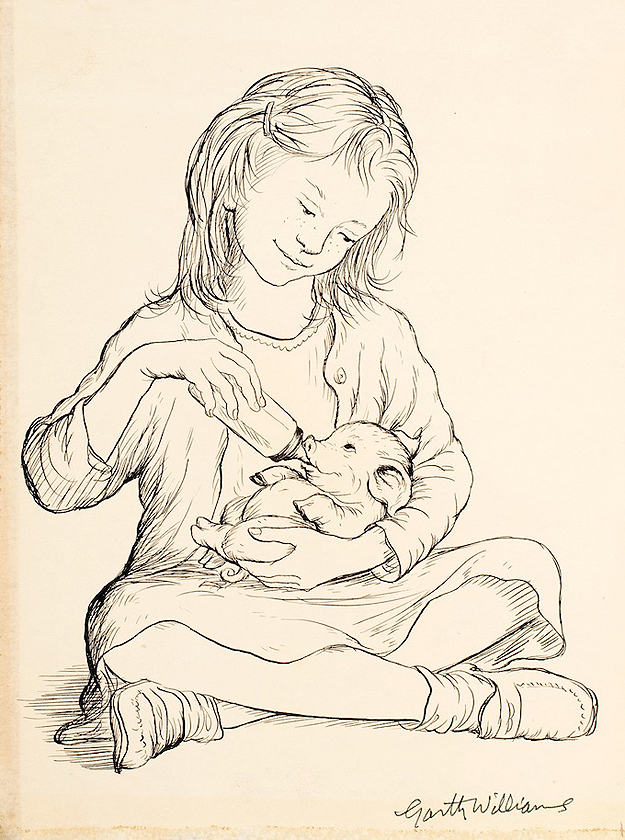
And my classmates and I laughed a hundred times at this illustration of fat Templeton.
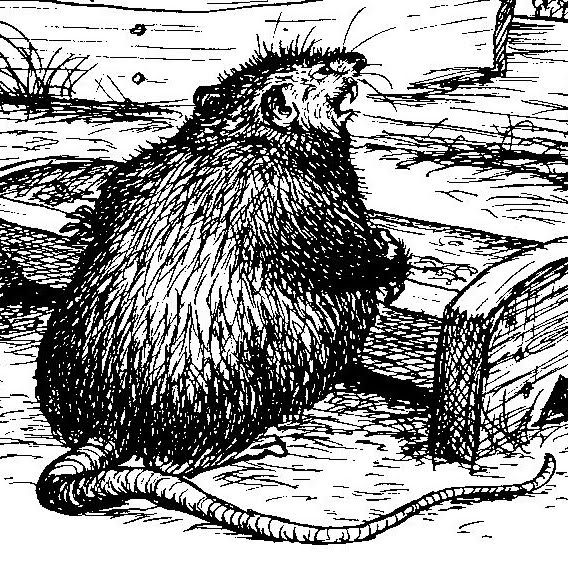
Genius.
The non-surface stuff: I have always been leery of books people call “classics.” This is probably me being a forever a stubborn child who wanted to be left alone to read Babysitter’s Club and The Sisterhood of the Traveling Pants. Reading through the canon of blah-boring-European-male-long-ass-indecipherable-prose books didn’t help. One of the reasons I am so attracted to Children’s/YA lit is because it is so often NOT any of those things. It is the things I like about reading, not the things I hate.
That being said, two points –
Point A: I am even leery of “classic” children’s and YA books. I didn’t read a lot of them as a child (see: Babysitter’s Club) and haven’t read many as an adult (see: every other book I would rather read). I still just assume that I won’t like them, that reading them will be a chore.
Point B: Despite this, within the past few years, I have flat-out LOVED many of those “classics” I have decided to read. They keep appearing on these Top 10 Lists, statistically out-representing my contemporary reads.
This could quickly devolve further into a very lengthy psychoanalysis of my reading habits and history. But let me tell you that Charlotte’s Web is such a solid book, I am beginning to come around to that old idea that “maybe they are called classics for a reason.”
Even though I enjoyed reading this book as a child, I couldn’t have understood it’s “specialness” until becoming an adult. So please, read this book again I mean, look at this face, will you?
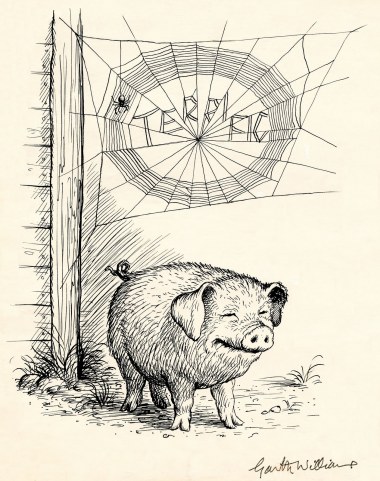
How can you say no?
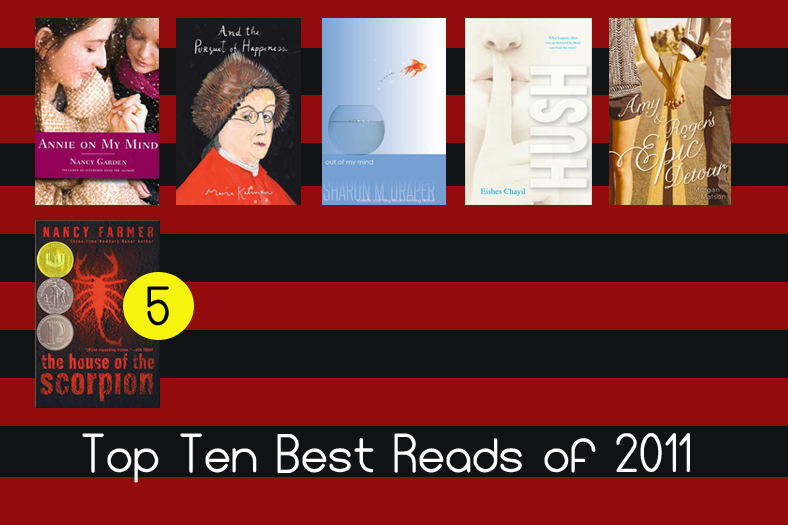
This book first caught my eye when I was working at a public library, spending many hours digging through the YA collection in an attempt to weed out enough books to counteract the books coming in. (This was a largely futile endeavor, by the way). I worked very hard to ignore my own biases when weeding – I once tried to weed the entire Chronicles of Prydain series only to find out that oh, they are somewhat historically important despite possessing tacky covers and only being checked out once in three years. But that doesn’t mean I didn’t acknowledge and remember my own biases.
I do remember spotting The House of the Scorpion on the shelf. I do remember its circs weren’t great. I do remember looking at the cover and thinking “Oh, my. That looks like a book I would never like.”
I also remember thinking. “Oh, MY, look at all those MEDALS!”
I’m still not sure how one book can be shortlisted for the Newbery AND the Printz. But moving on, I did finally read this heavily-medaled text and found my initial reactions to be incorrect. The House of the Scorpion is not the kind of book I would never like; it’s the kind of book that I do like.
And it’s probably the kind of book you like, too. This is a dystopia from before dystopias ran rampant – not a cutesy romance with a futuristic cover-plot, but a complex, painful, dark version of the future. Matteo Alacrán begins his life in a way that reminded me distinctly of the first few chapters of Room – I haven’t read the rest of the book, so maybe this is a terrible association, but the trappings of Matteo’s young life is really quite similar: a small apartment, a single female caretaker, a predictable daily routine, and he never goes outside. But when two children appear at his window, Matteo realizes there is a greater world outside… and once Matteo himself ventures out there, he realizes that in this greater world, he is not just a bright young boy, but somewhere in between an heir to the opium fortune of a feudal drug lord and an inhuman monster.
So we have our dystopian hero. Check. Now we need a completely insane rendering of the near future that could very well happen at any time. Farmer’s future is a horrifying example of what happens when corporate interests and wealth take over government interests. The Alacrán family runs the world’s opium trade, their territory has become, simply, a country called Opium that lies between the US and what was once Mexico. Opium, then, serves as a barrier between the two countries – both of which are fairly third-world and destitute – and among other heinous deeds, the Alacrán estate has the freedom to grab at any illegal immigrants who enter the borders. The Alacráns themselves, however, live in a complete oasis – a compound of mansions with fountains, pools, delicious food, hired help, and air conditioning. The 1%, in the middle of the desert, and Matteo and the other children have little idea of what kind of corruption and violence occurs outside the walls of their compound.
I feel like I have ceased making sense, but please believe me (and the bevy of medals on the cover) when I insist that this is a complex, engaging, rewarding read. Think The Giver, think Hunger Games… and I don’t mean that in a “these are dystopias, so you will like this other dystopia.” I mean that the intensity/readability of The House of the Scorpion will remind you of why you started liking the genre in the first place.
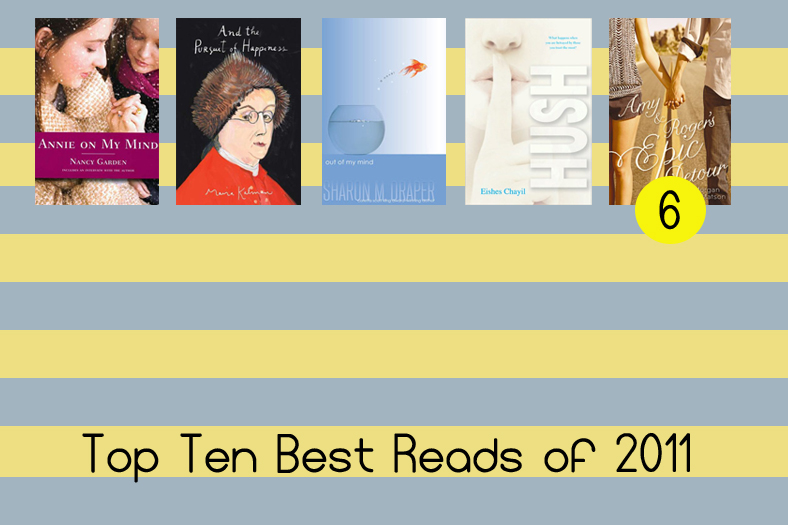
Okay. I’ve talked about a few syllabus books that surprised me by being really good reads. But you guys… I have like, 30+ books to read each semester. 95% of the books I’m required to read fall somewhere between a monotone kind of “oh, well, that was interesting. I really like x, y, z… ” and “Uh… ugh. What the heck.” I am so happy to do my reading, I swear, and think it is so essential to read outside your preferences… but the books I read for school are not, typically, the same ones I will buy for my bookshelf, that I will read multiple times, that I will love foreverandeverandever.
Amy & Roger’s Epic Detour was the first big exception. This is 100% the kind of book I love, and it magically appeared on my Realism syllabus last Spring as a selection for our “New Voices in YA” class period.
Amy is faced with one of those probably-not-likely-in-real-life-but-hey-let’s-roll-with-it scenarios: her father has just died, her younger brother is in rehab, her mother has decided to move from California to Connecticut but for some reason cannot take the family car; Amy, rocked and reeling from all this sudden change and tragedy and only 17-years-old, simply MUST drive the car across the country on her own.
(Because this makes all the logical sense in the world.)
Anyway, Amy’s mother makes up for this parental disregard for her offspring by micromanaging her daughter’s trip. She will take a thoroughly boring, quickest way from A to B route through middle America. She will only drive X amount of miles a day and stop at specific, pre-paid hotel rooms. And because she doesn’t drive anymore, Amy will be chauffeured by a friend of the family – a boy, Roger, who is going to spend his first summer back from college with his dad on the east coast and needed a ride anyway.
The two set off on their journey, stopping in different cities and meeting all variety of local characters. Between CA and CT, Amy confronts her grief and her relationship with her mother while slowly falling for Roger. Of course. Sorry if you thought that was a spoiler, but it wasn’t. This is a classic contemporary YA romance – Sarah Dessen on the highway, if you will – but very well done, well-written, etc. There’s a bit of multimedia going on with this book as well – Roger’s mix CDs, scraps of tickets and receipts, etc. I usually find this gimmicky, but Matson uses it sparingly, like an accent rather than a substitute for content.
And I do love me a good road trip. Next Saturday, I set out on my own Epic Non-detour between MA and MI, and even though it is a long-ass, boring-boring drive through some long, horizontal states… I still get a little excited planning for road snacks and stocking my iPod, and thinking about what kind of epic conversations I might get into. Matson really captures all of this classic road trip excitement and made me want to hop into my car and go.
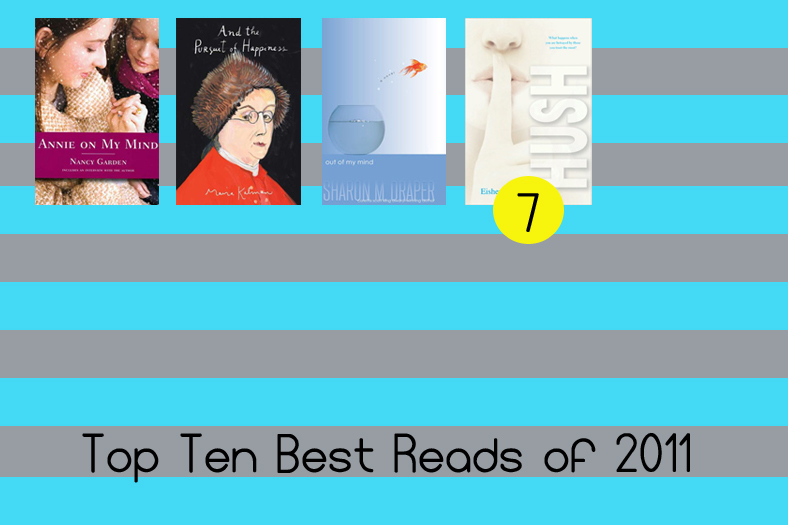
Question:
How many young adult books did I read in 2011 that featured a young person committing or attempting to commit suicide?
Answer:
8
In Hush, our protagonist must deal with the personal and social aftermath of her best friend’s suicide. In fact, her dead friend still seems to haunt her, six years after the event. Although emotionally gripping, this is not exactly a fresh story formation. In fact, Nina Lacour’s Hold Still – which I read within the same month as Hush and talked about last week– is basically the same concept. I was going to blame Jay Asher’s immensely popular 13 Reasons Why, maybe even Laurie Halse Anderson’s Wintergirls, but even just looking at my own 2011 reading, this is a historically common YA theme. Heck, even Forever… took a break from all the sexy-sex for poor Sexually-Confused Side-Character Artie to attempt to kill himself! As if that book were not overly dramatic enough…
Hush, however, made me forget about the rest of the bunch. Protagonist, Gittel, lives in a highly secluded Orthodox Jewish community in Brooklyn, and everything about her life revolve around her religion and her society – her world, her grief, and the circumstances surrounding her best friend Devory’s death.
Gittel’s pain is just as complexly rendered as any surviving character in these suicide narratives, but Hush is also engages in an examination of the societal factors that led an 11-year-old girl to kill herself, and keep Gittel from fully expressing and understanding her grief. The author, Chayil, is herself a member of a Chassidic community, writing with a pseudonym and recalling actual events that occurred within her community. Realizing this fact while I read had two effects. First, and most obviously, the tragedy had much more impact knowing that this is, actually, not the stuff of history but a pattern that occurs today in these communities. But second, I found myself more engaged with Gittel’s struggle, imagining that this is how many young women in Chassidic communities must feel. Gittel wants to understand and talk about her friend’s death, but she also wants to live up to her role as an Orthodox woman – to marry and have children – and to earn respect from her community and God. Gittel can’t speak up without bringing shame to herself and her family, but she can’t forget what happened to Devory.
Chayil also recently un-pseudonymed herself in The Huffington Post: from this article and reading the book, I think Chayil wrote this novel as a way to grapple with her own conflicts as a Chassidic woman and expose some of the dangerous patterns that the community would otherwise keep under wraps.
So fascinating, so heartbreaking, and I basically couldn’t put it down.
I don’t read a lot of truly “children’s” books for fun. This probably makes me a terrible student of children’s literature/future children’s librarian-type-person… but I’m really just in it for the YA. So it’s probably bizarre and inaccurate of me to be so shocked by how amazing of some of these books for younger readers are, but I did not expect Sharon Draper’s Out Of My Mind to keep me tethered to the couch the day I picked it up. It was one of those books you speed through, finish and say…
“woah.”
(Note: my book reactions for this round of reviews are getting closer and closer to irrelevant. I acknowledge this.)
So, the premise/protagonist/amazingness of Draper’s novel is Melody. Melody is eleven. She’s amazingly smart with a photographic memory, she has synesthesia which gives her this multisensory passion for old country music, and she was born with cerebral palsy. She’s this awesome little girl who can’t express her awesomeness. Her parents believe in Melody – in her capacity to learn and improve and participate – but with work and her baby brother, they don’t have the time or money to explore her condition medically or socially. But when Melody gets the chance to sit in on the “regular kids” fifth grade class, she realizes all that she is missing – learning, friendship, etc – she starts devising ways to get more attention, so that maybe she can participate with the real world.
I don’t want to give much more away because I enjoyed some of the plot surprises here, but trust me – there is a surprising amount of plot in this book. Although Melody’s cognitive capacities are speculative (as far as I can research and as far as Draper acknowledges in interviews), Draper paints Melody with such a rich inner life that I didn’t care. And the ending? Hearbreakingly ridiculous.
Again:
“woah.”
I am a big fan of Maira Kalman. I am also a big fan of American political history. I am also a big fan of heavy, colorful books that look nice on your coffee table, feel nice in your lap, and make you feel like you bought an object rather than a book.
And the Pursuit of Happiness is all of those things. This book was first a blog (what a concept! I know!) at The New York Times. After attending Obama’s inauguration in Janury of 2008, artist Kalman was inspired to spend the rest of the year studying the rich political history of American and American democracy. Each month, Kalman takes a mini-pilgrimage to a different place of historical interest, and she captures her trip with words and paintings.
I liked how this book was political without being political. Kalman’s work shows a real respect for the wide range of people who influenced our nation in various ways: George Washington, Thomas Jefferson, Alexis de Tocqueville, Ruth Bader Ginsberg, and others are featured here. Kalman also follows democracy in all directions, visiting The Supreme Court, a town meeting in Vermont, and a 4th grade student council in the Bronx. This would make a really lovely gift for 9 out of 10 people. If you live in America, you should like this book.
But maybe I just liked it because it fueled my persistent historicrush:
P.S.! Maira Kalman has a YA book coming out this month, Why We Brok Up, written with Daniel Handler (aka Lemony Snicket). I would have read it already, but my cat went into my roommate’s room and dumped a glass of water on her ARC. Peach!! What is your problem??? It also has a cool/depressing website.